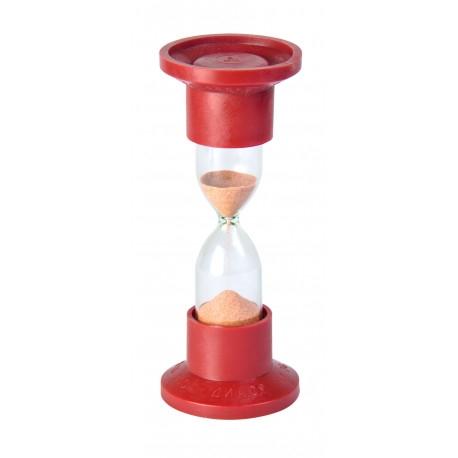
chemical hourglass
Hourly reactions are changes whose effect (for example, a change in color) does not appear immediately, but only after some time after mixing the reagents. There are also reactions that allow you to see the result several times. By analogy with the "chemical clock" they can be called "chemical hourglass". Reagents for one of the experiments are not difficult to find.
For the test we will use magnesium oxide, MgO, 3-4% hydrochloric acid, HClaq (concentrated acid, diluted with water 1:9) or food vinegar (6-10% solution of acetic acid CH3COOH). If we do not have magnesium oxide, drugs to combat acidity and heartburn will successfully replace it - one of the ingredients is magnesium hydroxide (MgO turns into this compound under reaction conditions).
Responsible for the color change during the reaction bromthymol blue - the indicator turns yellow in an acidic solution and almost blue.
For glass 100 cm3 pour 1-2 teaspoons of magnesium oxide (photo 1) or pour about 10 cm3 preparation containing magnesium hydroxide. Then add 20-30 cm.3 water (photo 2) and add a few drops of indicator (photo 3). Mix the contents of the blue-colored glass (photo 4) and then pour a few cm3 acid solution (photo 5). The mixture in the glass turns yellow (photo 6), but after a while it turns blue again (photo 7). By adding another portion of the acid solution, we again observe a color change (photo 8 and 9). The cycle can be repeated several times.
The following reactions took place in the beaker:
1. Magnesium oxide reacts with water to form the hydroxide of this metal:
MgO + N2O → Mg(OH)2
The resulting compound is poorly soluble in water (about 0,01 g per 1 dm3), but it is a strong base and the concentration of hydroxide ions is sufficient to color the indicator.
2. The reaction of magnesium hydroxide with the addition of hydrochloric acid:
Mg(OH)2 + 2HCl → MgCl2 + 2H2O
leads to the neutralization of all Mg (OH) dissolved in water2. Excess HClaq changes the environment to acidic, which we can see by changing the color of the indicator to yellow.
3. Another part of magnesium oxide reacts with water (equation 1.) and neutralizes excess acid (equation 2.). The solution becomes alkaline again and the indicator turns blue. The cycle is repeated.
Experience modification is to change the indicator used, which leads to different color effects. In the second attempt, instead of bromthymol blue, we will use phenolphthalein (colorless in an acid solution, raspberry in an alkaline solution). We prepare a suspension of magnesium oxide in water (the so-called milk of magnesia), as in the previous experiment. Add a few drops of phenolphthalein solution (photo 10) and stir the contents of the glass. After adding a few3 hydrochloric acid (photo 11) the mixture becomes colorless (photo 12). By stirring the contents all the time, one can observe alternately: a change in color to pink, and after adding a portion of acid, discoloration of the contents of the vessel (photo 13, 14, 15).
The reactions proceed in the same way as in the first attempt. On the other hand, using a different indicator results in different color effects. Almost any pH indicator can be used in the experiment.
Chemical Hourglass Part I:
Chemical Hourglass Part I
Chemical Hourglass Part II:
Chemical Hourglass Part XNUMX